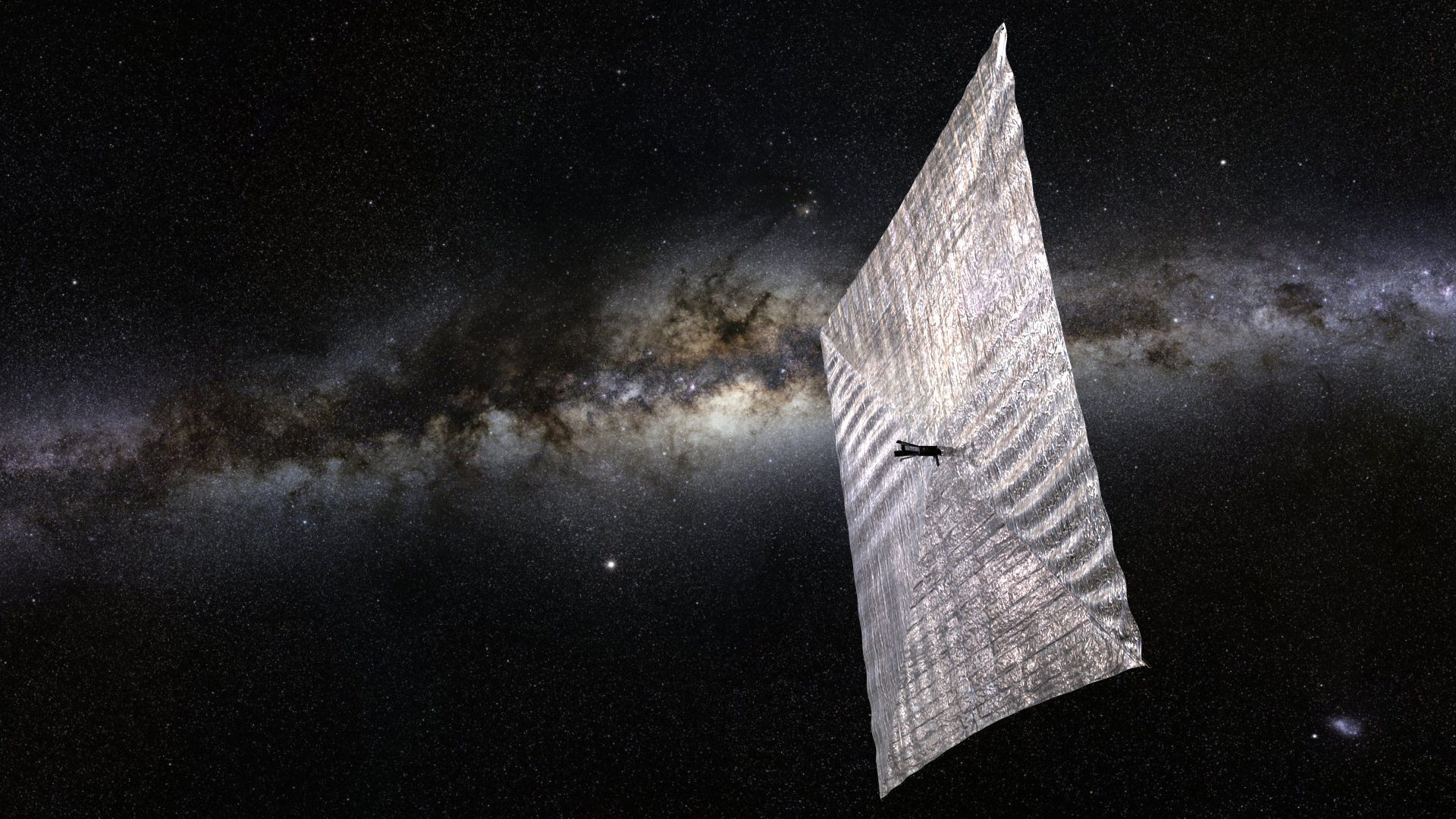33
Exploring
Solar Sails
Solar Sails | What are solar sails?
1
2
3
Distance
Solar sails can propel a spacecraft for enormous stretches of space. While traditional rocket powered spacecrafts can do the same, solar sails do it without the use of fuel. Technically solar sails can travel in space infinitely, as there is always a light source. However, solar sails can slow down due to atmospheric drag.
How Solar Sails Maneuverer
When solar sails travel in space, their velocity will increase due to a constant force being applied. For a solar sailed powered spacecraft to speed up the sail must be tilted in away so that the light from the sun speeds it up, this position usually has the sail facing the sun or at an angle depending on if the operator wants to change the course. To decrease speed the sail would be tilted in the opposite direction and the light will act as a break to slow the spacecraft down. Maneuvering in space with solar sails is determined by what angle the sail is oriented relative to the sun.
Exploration
Solar sails are considered an excellent spacecraft propulsion system for exploring space due to their cheap operating costs and long operating lifetimes. The lifespan of the sail is very dependent on the type of voyage; sails traveling in high temperature environments will have a lower life span than sails operating in low temperature environments.
Introduction | How Solar Sails Work
Solar sails are able to function due to light. Light releases pressure that is exerted on all objects. If that light (pressure) is harnessed on a large enough surface the light's pressure can act as a propellant for the spacecraft. In other words, light contains photons, and while light has no mass, it contains momentum due to its extremely high velocity, which is the speed of light. The momentum from the photons hits a reflective surface and the force from the momentum are then transferred into the solar sails, propelling the spacecraft. Solar and/or magnetic sails may be used for both interstellar space travel, as well as, changing orbital position.


Sunjammer | The Largest Solar Sail
The Sunjammer named book called Sunjammer by Arthur Clarke in 1964. This solar sail is being developed by NASA to study various space objects. The solar sail has a dimension of 124 x 124 feet. The entire spacecraft would have a payload of 70 pounds. The solar sails themselves are developed from kapton, which gives the sails the ability to withstand higher temperatures then average sails. The solar sails was scheduled to be delivered to space by SpaceX's Falcon 9 rocket, unfortunately NASA felt had a lack of confidence with SpaceX's ability to deliver the payload.
Sunjammer

124'
124'
Solar Sail Kapton - A material that can withstand extreme temperatures
+